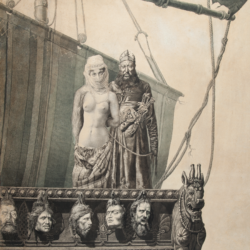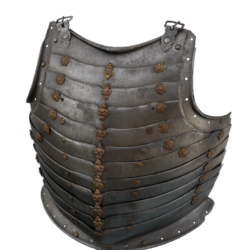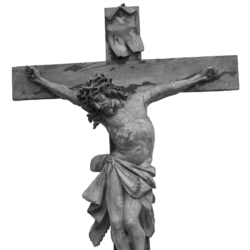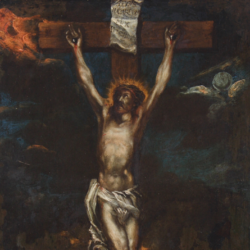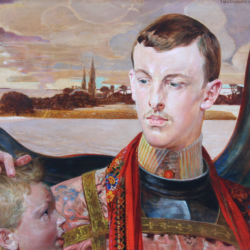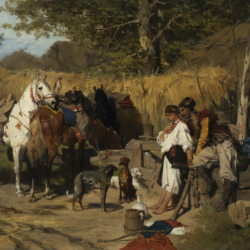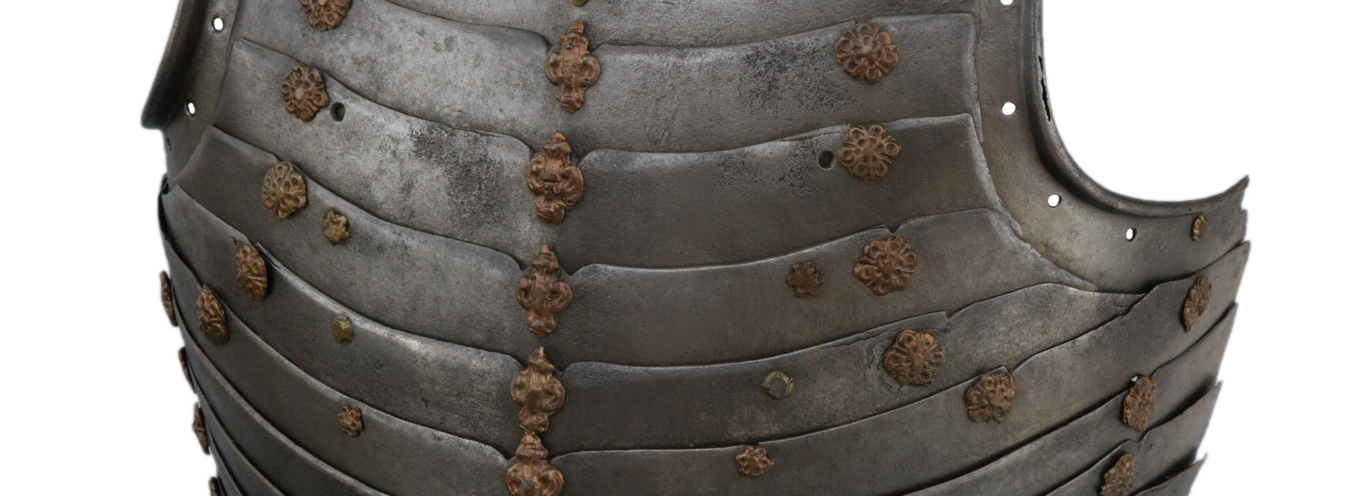
The logic of suffering II (Maria Konopnicka)
In a small sketch devoted to Sienkiewicz, attached to two ample critical essays concerning Józef Bohdan Zaleski and Adam Asnyk, Konopnicka celebrates the greatness of the writer as the creator of life. Not a chronicler but a creator: “In this work, apart from its historical content and artistic beauty, we can always read, on every page, an imperative that tells us with great power: Whatever your fate is – live! And whatever your suffering is – live! And whatever your weakness is – live! And even if you were to suffer more while burning, rather than cooling off; being afire, rather than dying out, then burn, be afire, and live!”[1]
Konopnicka’s text is organized via the metaphor of fire and its related tropes. So, we have the bonfire, firebrands, burning logs, hot ash, which initially, in the early works of Sienkiewicz, was barely smoldering, in need of stimulating, fanning, and boosting the weak sparks:
Portofolio [Humoreski z teki Worszyłły, Humorous Sketches from Woroszyłło’s Portfolio], whose every page targets apathy, indifference, stillness, and stuffiness, is nothing but a stab into the dying bonfire, a stab into the firebrands, covered with the ash of selfishness and idleness, which – by themselves – could not sustain the flame of life.[2]
The short stories written in Sienkiewicz’s early years are called by the poet “the fuel,” collected from scattered brushwood. The fates of economic migrants, the excluded ones, those who were not included in the division of material goods, constitute “the wasted firewood of life.” The historical novels kindle the fire of the great historical events – so not from the brushwood anymore, but from large firebrands, only seemingly dead. They made “the fire of our souls blaze stronger. More visible, hotter, and more commonly felt, and our life intensified.”[3]
Konopnicka is aware of the paradox that she uses, and she does not refrain from explanation. The burning logs emit light and heat, but they die soon, self-burning. Sienkiewicz’s novels, written and read “to cheer people’s hearts,” are filled with the images of pain and suffering. How can we reconcile the logic of life and the imperative of death? Konopnicka does not explain the author’s choices with the conventions of the genre or the historical context. She can see a deeper individual purpose. She writes about the author of the Trilogy in the following manner:
In his hands, the motif of pain, the motif of torment, the motif of death as a sacrifice has become a powerful tool of expiation, atonement, and the power of resurrection. Some figures created by Sienkiewicz are based solely on this motif, and their mental suffering means tearing their soul into bloody pieces; and their bodily suffering is so great that it is unbearable to the audience.[4]
What justifies the accumulation of horror – for instance in the scene of “the gruesome death of Azja (Azia), the unfortunate traitor” or in the scenes of torment administered to Jurand in the dungeons of the Teutonic Knights’ castle? The horror created by Sienkiewicz does not end with the scenes of tortures; it is never fruitless as Konopnicka notices. It is ruled by its own laws – the law of forgiveness given to those who were doomed to it, and the law of sanctity for those who willingly sacrificed their lives.[5] The poet considers the case of Płoszowski along slightly different lines. He suffered but insufficiently to deserve help; he merely deserved to be appreciated for his metamorphosis and to earn understanding and reluctant acceptance on the part of the readers.
Just the way that suffering is not fruitless, fault cannot be hopeless. That is supposed to be proven by the figure of Kmicic (Kmita), treated as a prefiguration of the repentant sinner.
Przypisy
- M. Konopnicka, Szkice. Bohdan Zaleski – Adam Asnyk – Henryk Sienkiewicz [Sketches: Bohdan Zaleski – Adam Asnyk – Henryk Sienkiewicz], Lviv 1905, pp. 120–121.
- Ibidem, pp. 221–222.
- Ibidem, p. 124.
- Ibidem, p. 125.
- Urszula Benka presents another perspective: she believes that in Sienkiewicz’s writing, even abandoning revenge does not mean forgiving. See U. Benka, “Iluzja kuszenia. Uwagi na marginesie ‘Quo vadis’ Henryka Sienkiewicza” [The illusion of temptation: Remarks on the margins of Henryk Sienkiewcz’s Quo Vadis], Acta Universitatis Wratislaviensis Prace Literackie 1992, vol. 32 no. 1459, p. 67.

